Framing Text
#NoFilter
Starting with the inspiration of Venus, the Roman goddess of love, beauty and fertility, we have created a performance that explores the struggles that women face to achieve perfection. In our exploration of women in art throughout the decades, we have discovered a clear reflection on how women are seen in today’s modern media; women are often seen as limited and unrealistic; depictions of women as domestic housewives, parents, sex objects and dependents upon men. There is also a very noticeable theme that is missing or under-depicted, working women. We are ‘exploring [the] physical and mental limits in the works that ritualize the simple actions of everyday life’ (Lisson Gallery, 2015) as a woman, using Marina Abramovic’s concept of allowing her body to be exposed to pain. We have taken influence from our own perspective of what challenges we, as women face, and the process we force ourselves to go through. Our performance highlights the ugliness behind the beauty.
With special thanks to:
Ferenc Igali, Darren Page and Ashley Gallant.
WARNING NOTE: This performance contains semi-nudity, sharp objects and potential allergy hazards (cosmetics and flowers)
Marketing Text
Throughout time artworks have been created which focus on the female body. From the image of Venus in art through to the representation of women in the modern media, the ideal version of the perfect woman has varied. Women have been portrayed in a way that their societies expected them to. This is prominent when studying the history of the illustration of women, as it often accentuates their assets through the visual perspective of the male. Through physicality and performative text, our performance explores the expectations of women and the struggle to achieve physical perfection.
This is a durational performance starting at 12 and finishing at 2. Please feel free to come and experience for as long as you like.
WARNING NOTE: This performance contains semi-nudity, sharp objects and potential allergy hazards (cosmetics and flowers).
Understanding Site-Specific Performance and The Usher Gallery and The Collection
I began to explore the question, ‘what does the museum tell you about the collections’, focusing not only on the artefacts in the museum, but also on the paintings and sculptures in The Usher Gallery and The Collection. The question became a stimulus for an idea of performance text.
Firstly The Collection shows us and tells us what life was like thousands of years ago and therefore provides proof of history in the past, present and future. By showing us what kind of things were used so long ago in every day life has the ability to possibly make us appreciate the things we may take for granted. The museum educates us on what the world was like and gives us the opportunity to acknowledge change.
Whereas the museum can address a whole era, the gallery can distinctively focus on a specific moment. A moment of which an artist has created a piece of work, expressing their emotion and feeling from that specific moment.
Having collections of artefacts to contemporary creations, lead me to begin to ask questions such as, what would a museum of the future show for our lifetime? A car-tyre? To show that cars used to roll and not hover (maybe)? Or it could be as simple as a photograph, because photographs may not even exist in the future, as it seems technology is becoming the easier and more efficient way to store ‘everything’.
As an experiment I would have contemporary objects such as, a mobile phone, a car-tyre, a chair and a pair of glasses, scattered around or sculptured together in the reception area of the museum. I would specifically place the experiment here as within the building the reception area is where I believe represents present day and ‘now’. Customers enter the building and sign in, or look at the souvenirs for themselves in that specific moment, with the thought for present day. However, when they pass the reception, they enter the exhibit with the atmosphere of the past. Therefore I would keep the contemporary objects or sculpture in the reception foyer and experiment with the reactions of the audience. Will they acknowledge the objects or not, will they see the relevance of the site, will they attempt to understand the reason for each specific object.
When thinking about ideas for a performance, I enjoyed the idea of physically performing the context of a certain piece of art that stood out to me. I had an instant connection with George Shaw’s Untitled (The Bed) piece due to the art being a recognisable image to what I have experienced before. By possibly closing off an area of The Collection (where possible, preferably a quiet place away from the foyer) with the use of curtain rails, to produce a compact dark space for an exhibition which will convey the context and my own interpretation of Shaw’s work, ’The Bed’.
My first impression of the piece brought back memories of my great grandmother suffering with dementia and painful arthritis. Not only memories but, smells, sounds and emotions; and with the use of images, props, sounds and a possible use of smell, I could enact my interpretation of the text with the inspiration of Shaw’s work.
The piece would be site specific because the memories from a certain, sentimental time for me were relived in my mind by the work of Shaw. Therefore a memory is an exhibition itself for I will be presenting and reliving it, and by conveying my response to the artists work, this will allow the spectators to enter and experience a small aspect of my personal memory exhibition and have their own response.
To make clear, I would avoid exhibiting only the artists personal description of performativity, as I believe the most interesting and important part of viewing art is the endless interpretations they have on spectators, as Mike Pearson expresses in Theatre/Archeology, ‘Rooted in uncertainty, they all require acts of interpretation. And there is no end to what can be said about them, to how the might be interpreted.’ (Pearson et al, 2001, 56).
The collection museum is a place for visitors to spectate and enjoy the history it is showing. Specifically, the collection exhibits the history of Lincolnshire with artefacts found in Lincolnshire, artwork and sculptures created by people of Lincolnshire. I believe it is a place where you are able to walk in with a clear mindset of the county and walk out with a greater appreciation and understanding of Lincoln.
People have made Lincolnshire their home and made it their own for nearly a million years; we have evidence of their lives and traces of their beings all around us, some acknowledged and identified, some still hidden waiting to be found.
Everywhere we stand, someone has stood before.
Everything we see, others have viewed differently.
Everything we have ignored, others have acknowledged.
Everything around us silently tells history and stories of the lives from the past.
The archeological gallery exhibits an insight to Lincolnshire’s captivating heritage through not only artefacts, but also the building itself, being partially sat on the site of a scheduled ancient monument. A building inspired and centred on a county so rich in heritage, Lincoln; as John Berger said in Ways of seeing. Ep1, ‘Everything around the image [In this case, the museum] is part of it’s meaning. Its uniqueness is part of the uniqueness of the single place where it is. Everything around it conforms and consolidates it’s meaning’ (tw1975, 2012).
The Cathedral of Lincoln is, as John Ruskin once said ‘out and out the most precious piece of architecture in the British Isles’ (Lincoln Cathedral, 2015). It is also one of the main attractions that bring people to Lincoln and remember it. Therefore to have the collection museum reflect Lincolnshire for it’s history and existence, I believe it is reflecting and is as important as the Cathedral of Lincoln and the architectural design is a beautiful thing, as you can see in the image, as it promotes and presents the Cathedral as an artefactual/art piece, with a beautiful clear view from the foyer, with the edges of the window to act as a frame; people are able to exhibit the museum and leave with a beautiful view of one of the most famous and rich in heritage buildings in Lincoln.
Analysis of Process
Influence – Marina Abramovic
“I test the limits of myself in order to transform myself,” she says, “but I also take the energy from the audience and transform it. It goes back to them in a different way. This is why people in the audience often cry or become angry or whatever. A powerful performance will transform everyone in the room.” (The Guardian, 2010).
We enjoyed the idea of bringing the audience into the same consciousness as the performer, from them entering the site to experiencing the notions and pressures we were feeling. We believed pushing our bodies to a limit that we feel pain and discomfort would be naturally shown and therefore allow the spectators to engage and react to this in there own way, which is very interesting to see how a performance can effect an audience.
We were also inspired by Abramovic’s idea of using things around us as an influence for a performance; ‘Instead I started looking at what is around me and using it for art’ (The Guardian, 2010). Looking at social activities to find a performative idea from was our main concept we was exploring. Performing in a gallery where cultural and historical concepts are being presented, we believed it would be interesting to provide a performance that engages with the performative concept and point that a gallery and museum provides.
‘The museum is presented as a performative site where its dominant socially and historically constructed pedagogy engages in a critical dialogue with the viewer’s memories and cultural histories’ (Garoian, 2001).
Understanding that the gallery already owns a performative context, suggested that our boundaries of acceptance would be considerably unrestricted, in belief that spectators enter museums and galleries to acknowledge different forms of art, whether it is to appreciate the art or question it; but overall being in a gallery indicates artistry. However, even though we felt unrestricted with our ideas being accepted or acknowledged as art, we felt the limits of what the Usher Gallery and Collection allowed to achieve. The rules in The Gallery restricted many ideas and performative suggestions; this was difficult to work around and limited our ideas as we had many obstacles that came with working in The Usher Gallery.
‘If site-specific performance involves an activity, an audience and a place, then creative opportunities reside in the multiple creative articulations of us, them and there. ‘ (Mike, 2010, p. 19)
Us – we presented our bodies as an object of how women are being lead to believe there are key steps to reach perfection, and ‘perfection’ is the goal that all women are expected to achieve. We took positions that would suggest entrapment and suppression, discrediting human behaviour such as talking, moving and walking. Positioned around the statue of Venus Kissing Cupid, we were tied together with string around our wrist, the string representing a washing line which would droop down as more items were ‘pegged’ on to symbolise the suggestion of the pressures such items can cause; creating a conjunctional meaning with the idea of the items being ‘pegged on the line’, a typical household job for a woman. The stress caused by the string on our wrists became very painful and caused lasting imprint and looked effective through the performance. The feeling of giving up was an emotion that was apart of the performance; performance is about being in the correct state of mind and through pain and exhaustion, we were being lead to a new state of mind. We were not only focusing on the context of performance but we were focusing on the discomfort and pain the items and string was afflicting on us, therefore bringing the performer and spectator in the same consciousness.
Them – we were interested in what type of audiences we would attract: men, women, and children? How each audience type would react: avoiding, staring or possibly find it humorous. ‘Women’s bodies are commodities in a global marketplace to be bought and sold; women are sexually available for men’s sexual pleasure, represented as sexual objects; and that women are empowered by sexualisation and objectification’ (Coy, Wakeling and Garner, 2011). While rehearsing, the majority of women who came into contact with the rehearsal avoided acknowledging the performance at all, they would pay full attention at the paintings around the room while ignoring the area we was in. Contrastingly, while rehearsing, the majority of the male spectators were keen on exploring our development by hovering around the area and watching, seemingly in a guilty way as it seems they wanted to watch what we were using and what we was doing yet felt uncomfortable and therefore, entered and exited the room continuously. We wanted to explore the concept of what makes a spectator uncomfortable. Through the presentation of the human body experiencing pain from the cause of items we believe will help us reach the expectations we are expected to achieve, weighing us down and making it difficult to hold our positions for the duration of time we needed.
There – ‘And since site persists through time, its features are always in play.’ (Pearson, 2010, 141) The audience were aware of the site being a gallery and therefore acknowledged the performance as a performative art piece, whereas any other place, such as the city, audience reactions and acceptability would vary.
Our performance centred around the statue of Venus Kissing Cupid. We researched the story of Venus and Cupid and what each mythological figure represents; understanding that Venus is the goddess of love, beauty and fertility makes our performance context relevant to the site/space we were based.
Rehearsal
Our rehearsal process consisted of experimenting ideas around the statue of Venus Kissing Cupid and finding different stimulus’s to engage with to present a performative concept on the representation of Venus.
We assigned ourselves performance tasks to help us physically engage with the statue and find inspiration through exploring different ideas on the subject. One example of a performance task was exploring the expectations of modern beauty. With Venus being the Goddess of beauty we believed this was a key and relevant theme to present. Modern beauty of women are presented through a variety of sources and in an age where the media plays a major part in society, we turned our attention to the portrayal of women in modern media sources such as advertisements magazines. We discovered that the majority of the representations suggested that women should be either ‘skinny’ or in contrast to this, ‘curvy’; a small amount of the sources we explored were inspiring women to be happy with how they look now, and a near-to-none depicted a woman which had nothing to do with her physical appearance. We cut out a variety of different depictions of women from the magazines we purchased and placed them around the statue to present the contrast between the statue of Venus, the mythological representation of beauty to the modern representation of beauty.
After developing an idea we felt passion about we had to train our bodies and experiment with the limits our bodies were able to reach. We understood that we needed endurance and strength to commit to the duration we wanted to achieve along with the pain we wanted to inflict on ourselves.
When Abramovic was preparing for her MoMa performance, The Artist is Present (2010), she went through great lengths to train her self “Physically, mentally, I have to prepare myself for a feat of endurance. I train the body and the mind. I learn to eat certain foods so that I don’t have to go to the toilet for seven hours. I learn to sleep in short bursts at night. This is very hard: sleep, wake, drink, pee, exercise, sleep. So even the not-performing is intense.” (The Guardian, 2010).
(MoMa, 2010)
Evaluation of Final Performance
When entering the performance space, the room was empty, there was no spectators present; but we entered the room with a focused mind set prepared mentally and physically for the pressures we were about to put our bodies through. When in the first position, I instantly felt pain and began to worry as I had to hold the position for two hours. I had to focus on holding the positions through the pain while being aware of making sure my body is able to endure it for the duration of the performance.
Through out the performance I acknowledged the other performers and the image of the performance as a whole, I believe some positions we took looked more powerful than others, when we mirrored the statue of Venus; this was one of the most difficult positions to hold as the stress on both wrists from the string and the weight of the objects was very painful. Due to a previous car accident I suffer with severe shoulder pain, and I began to feel stress in my shoulder around half way through the duration of the performance, I began to feel like my arm was going to give in involuntarily, therefore I had to focus on my arm staying in the position through the pain and weight of the objects.
Many audience members experienced the performance with the majority engaging with the performance by watching and walking around to view it from different angles. Surprisingly, we had a very diverse range of audience enter the site from parents with children, men and women from different ages and even young school girls. A middle aged man pushing a pushchair with a child entered the site and engaged in our performance by standing close and gazing at the items being pegged on the line, looking intrigued at the point of the performance, he stayed watching for possibly five minutes then exited to look at the framing text which was placed at the doorway of the gallery room. He then entered back into the performance space and watched for possibly a further five minutes. This surprised me as he had accepted the semi-nudity of four ladies and still entered the room with the young child. Another audience engagement that shocked me was the two young school girls that entered and stayed for a while and engaged in the performance, being such a young age and viewing the objects we were presenting that female’s use to feel ‘perfect’ with four ladies in extreme control wear, must have effected them in some way to make them stay and engage, with such maturity.
After the ending of the performance and being surprised by the diverse audience engagement, I believe to improve the performance we could have filmed the whole performance and therefore document each spectator and the time they stayed and watched the performance. This would add to the concept of challenging what audience we would attract and what audience would avoid us. And I think displaying this and viewing this as documentation, statistics of audience engagement, would be very interesting as we found inspiration on women being sexualised for the pleasure of men, yet we were challenging this concept by presenting the pressure women go through to achieve the beauty men ‘want’ to see.
(Kotsopoulou, F. 2015)
Our overall documentation of our performance consisted of an inventory list in white, handcrafted frame, which was presented on the bench in the gallery beside our performance along with two medication bottles filled with a variety of the items that were being pegged on the string that had been cut up into small pieces; this was to suggest the items could be viewed as a drug/medication that we choose to take.
Bibliography/Work Cited
Coy, M. Wakeling, J and Garner, M. (2011) Selling Sex Sells. Women’s Studies International Forum, (July) 442.
Garoian, C, R. (2001) Performing the Museum. Studies in Art Education, 42 (3) 234.
Kotsopoulou, F. (2015) Site-Specific Performance. Performing in The Gallery.
Lisson Gallery (2015) Marina Abramović. [Online] Available from http://www.lissongallery.com/artists/marina-abramovic [Accessed 4 May 2015].
Lincoln Cathedral (2015) Building. [online] Lincoln: Lincoln Cathedral. Available from http://lincolncathedral.com/building/ [Accessed 2 April 2015].
Pearson, P. and Michael, S. (2001) Theatre/Archeology. London: Routledge.
Pearson, M. (2010) Site – Specific Performance. London: Palgrave Macmillan
S, O’Hagan. (2010) Interview: Marina Abramović. [online] London: The Guardian. Available from http://www.theguardian.com/artanddesign/2010/oct/03/interview-marina-abramovic-performance-artist
Stigh, D and Jackson, Z (2010) Moma. Marina Abramovic – The Artist Speaks.
Tw1975 (2012) John Berger / Ways of Seeing, Episode 1 (1972). [online video] Available from https://www.youtube.com/watch?v=0pDE4VX_9Kk [Accessed 2 April 2015].
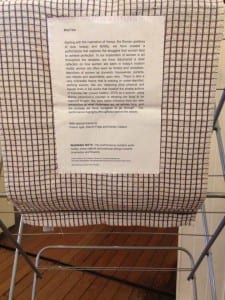
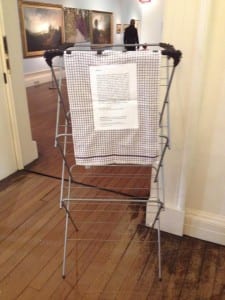
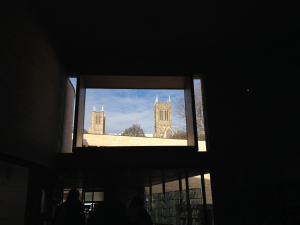
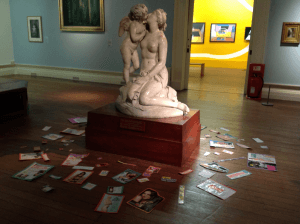
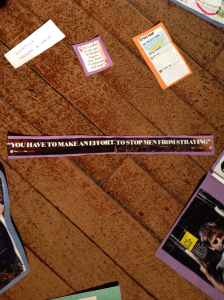
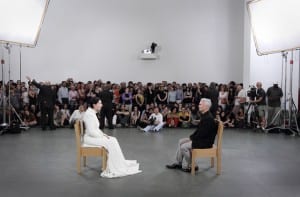

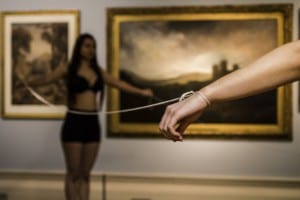
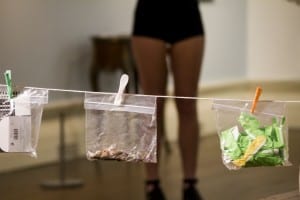


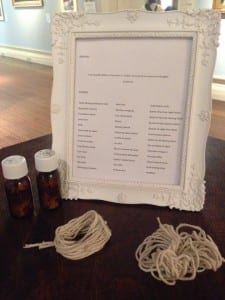
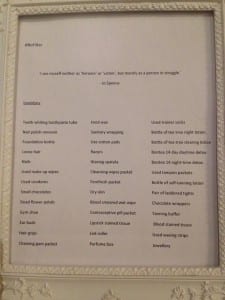
Recent Comments